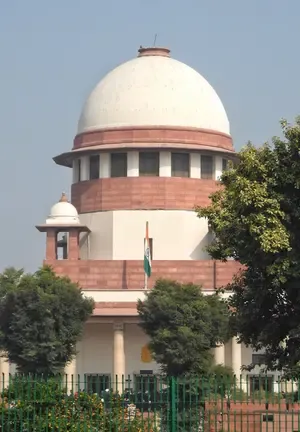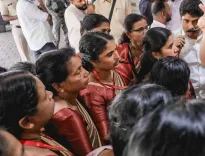Did the SC Deny the Plea for More Assembly Seats in Andhra and Telangana?

Synopsis
Key Takeaways
- The Supreme Court denied the plea for increasing Assembly seats in Andhra Pradesh and Telangana.
- Delimitation is on hold until after the first census post-2026.
- The court emphasized constitutional provisions in its decision.
- The Telangana Assembly has urged the Centre for an increase in seats.
- Constitutional amendments may be required to address the issue.
New Delhi, July 25 (NationPress) The Supreme Court on Friday rejected the request for a directive to the Centre concerning the increase of Assembly seats in Andhra Pradesh and Telangana.
A bench comprising Justices Surya Kant and N. Kotiswar Singh considered petitions seeking the execution of provisions under the Andhra Pradesh Reorganisation Act, 2014, which mandated the delimitation of Assembly seats in the two successor states.
In their ruling, the Justice Kant-led bench declined to mandate delimitation in Andhra Pradesh and Telangana, noting that Article 170 of the Constitution permits delimitation only after the first census conducted following 2026.
Delimitation under Article 170 has been suspended until the first census post-2026, as stipulated by the 84th and 87th Constitutional Amendments.
The apex court dismissed claims that the Centre's decision to conduct delimitation in Jammu and Kashmir, increasing the number of Assembly constituencies from 83 to 90 based on the 2011 census, while omitting Telangana and Andhra Pradesh, was arbitrary and discriminatory.
By emphasizing constitutional differences, it stated that Jammu and Kashmir, having been restructured as a union territory, is governed by parliamentary legislation, and constitutional provisions under Chapter III of Part VI do not apply.
In a related matter, the Telangana Assembly passed a resolution in March this year, requesting the Centre to raise the number of seats from 119 to 153, in accordance with the A.P. Reorganisation Act, 2014 and the latest census.
The state Assembly urged the Union government to introduce necessary constitutional amendments to enhance representative democracy.
Chief Minister A. Revanth Reddy highlighted that the Centre had previously indicated that delimitation of Assembly constituencies would occur only after the 2026 census.
Reddy criticized the Centre for its inconsistent stance on the issue, noting that while the Centre had increased Assembly constituencies in Jammu and Kashmir based on the 2011 census, delimitation is currently underway in Sikkim following a Cabinet resolution passed in 2018.







